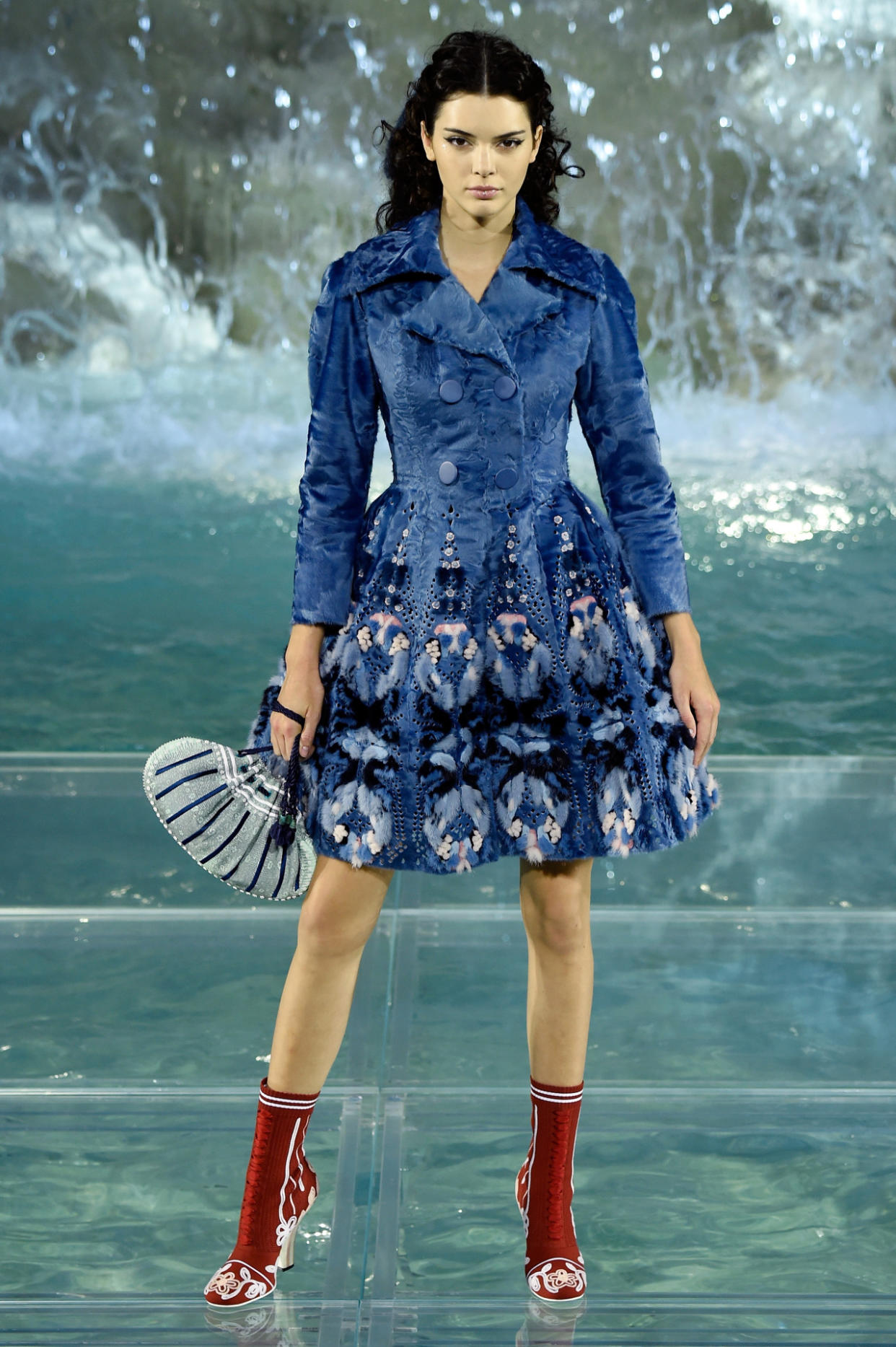An Anti-Fur Activist Dressed as Karl Lagerfeld to Protest Fendi’s Runway Show

Kendall Jenner takes the runway for Fendi’s 90th anniversary. (Photo: Getty Images)
Fendi loves fur and doesn’t care who knows it — and PETA has had it up to here with the brand. A member of the animal rights group protested the Italian label’s 90th anniversary show, showing up to the label’s flagship dressed in a grim reaper costume with a headpiece resembling creative director Karl Lagerfeld. The protestor was also holding a toy cat, to represent Lagerfeld’s famous feline companion, Choupette.
Related: What Kat Von D’s All-Vegan Pledge Means to the Makeup World
PETA’s qualms stem from the label’s unabashed use of fur in its second haute fourrure show. “Lagerfeld is willing to put a fox or mink through all that just for a coat, so it makes us wonder how his beloved cat Choupette would feel if she knew,” a blog post on PETA’s UK site reads. By “that,” PETA is referring to the gruesome treatment of creatures on fur farms, which it describes this way: “All fur is a product of torture and misery, and on fur farms, many intelligent wild animals are driven insane during their short lives by wretched conditions before facing gruesome, painful and terrifying deaths by methods that include vaginal or anal electrocution, gassing and poisoning.”
#Rome: “Karl Lagerfeld” Grim Reaper takes over @Fendi’s flagship store to remind them #FurIsDeath. #Fendi90Years pic.twitter.com/p2Y3nn44YF
— PETA (@peta)
At a time when more fashion houses — including Giorgio Armani this past spring — are opting out of using real fur, Fendi’s haute fourrure show flies right in the face of that. And as he is with most things, Lagerfeld is unapologetic about his continued use of real fur. As he told Vogue, “This is what Fendi is all about. No other fur house in the world does it, or could do it.” Lagerfeld may be correct in his assessment, but the real question is this: Do we really need Fendi to do this?
Related: Armani Vows to Stop Using Fur
There are great, fur-like alternatives out there, and as PETA mentions, fashion houses like Stella McCartney, Tommy Hilfiger, Vivienne Westwood and more have decided against using fur in their products. And while Fendi is under no obligation to follow suit, the fashion industry in general needs to figure out ways to be more sustainable. According to a 2011 study from CE Delft, “compared with textiles, fur has a higher impact per kg in 17 of the 18 environmental categories, including climate change, eutrophication, and toxic emissions. In many cases, fur has impacts that are a factor 2 to 28 higher than textiles, even when lower-bound values are taken for various links in the production chain.”
So even putting animal-rights ethics aside, the fact of the matter is that fur isn’t really sustainable. And in a time when fashion is starting to take a long, hard look at its negative effects on the environment, perhaps it may be prudent for Fendi to at least consider doing what it can to reduce the destruction. Why not start with the humane treatment of animals?
Follow us on Facebook, Instagram, and Pinterest for nonstop inspiration delivered fresh to your feed, every day.

